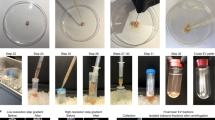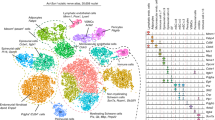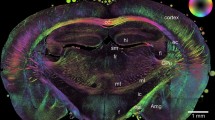Abstract
THE preparation of subcellular myelin-rich fractions so far has been largely restricted to the central nervous system (brain, cord and optic nerve), whereas separation of myelin from peripheral nerve has been beset with the problem of homogenizing the neural components in a morass of endoneurial and epineurial collagen. On attempting to homogenize peripheral nerves, the collagen fibres roll up into a slithery sludge, from which the myelin cannot be easily released and separated on a density gradient. Thus Horrocks1 admitted that the yield of myelin from peripheral nerves is much lower than that from the cord and he reported that “a substantial residue remains undispersed”.
This is a preview of subscription content, access via your institution
Access options
Subscribe to this journal
Receive 51 print issues and online access
$199.00 per year
only $3.90 per issue
Buy this article
- Purchase on Springer Link
- Instant access to full article PDF
Prices may be subject to local taxes which are calculated during checkout
Similar content being viewed by others
References
Horrocks, L. A., J. Lipid Res., 8, 569 (1967).
Adams, C. W. M., in Macromolecules and the Function of the Neuron (Excerpta Medica Foundation Monograph series, Amsterdam, in the press).
Koenig, E., J. Neurochem., 14, 437 (1967).
Whittaker, V. P., Biochem. J., 72, 694 (1959).
Autilio, L. A., Norton, W. T., and Terry, R. D., J. Neurochem., 11, 17 (1964).
Cuzner, M. L., Davison, A. N., and Gregson, N. A., Ann. NY Acad. Sci., 122, 86 (1965).
Lefler, H. H., and McDougald, C. H., Amer. J. Clin. Pathol., 39, 311 (1963).
Lauter, C. J. E., and Trams, E. G., J. Lipid Res., 3, 136 (1962).
Adams, C. W. M., Nature, 192, 331 (1961).
Adams, C. W. M., and Davison, A. N., in Neurohistochemistry (edit. by Adams, C. W. M.), 332 (Elsevier, Amsterdam, 1965).
Norton, W. T., and Autilio, L. A., Ann. NY Acad. Sci., 122, 77 (1965).
Laatsch, R. H., Kies, M., Gordan, S., and Alvord, E. C., J. Exp. Med., 115, 777 (1962).
Adams, C. W. M., and Glenner, G. G., J. Neurochem., 9, 233 (1962).
Lowry, O. H., Rosebrough, N. J., Farr, A. L., and Randall, R. J., J. Biol. Chem., 193, 265 (1951).
Adams, C. W. M., Davison, A. N., and Gregson, N. A., J. Neurochem., 10, 383 (1963).
Coleman, R., and Finean, J. B., Biochim. Biophys. Acta, 125, 197 (1966).
Emmelot, P., Visser, A., and Benedetti, E. L., Biochim. Biophys. Acta, 150, 364 (1968).
Author information
Authors and Affiliations
Rights and permissions
About this article
Cite this article
ADAMS, C., ABDULLA, Y., TURNER, D. et al. Subcellular Preparation of Peripheral Nerve Myelin. Nature 220, 171–173 (1968). https://doi.org/10.1038/220171a0
Received:
Issue Date:
DOI: https://doi.org/10.1038/220171a0
This article is cited by
-
Suppression of experimental allergic neuritis by cyclosporin-A
Acta Neuropathologica (1983)
-
Development changes in lipid composition of chick sciatic nerve myelin
Lipids (1973)
-
Isolation and Characterization of a Protein from Sciatic Nerve Myelin responsible for Experimental Allergic Neuritis
Nature New Biology (1972)
-
Histochemistry of myelin. VIII. Proteolytic activity around multiple sclerosis plaques
The Histochemical Journal (1970)
-
Histochemistry of myelin. IX. Neutral and acid proteinases in early Wallerian degeneration
The Histochemical Journal (1970)
Comments
By submitting a comment you agree to abide by our Terms and Community Guidelines. If you find something abusive or that does not comply with our terms or guidelines please flag it as inappropriate.



